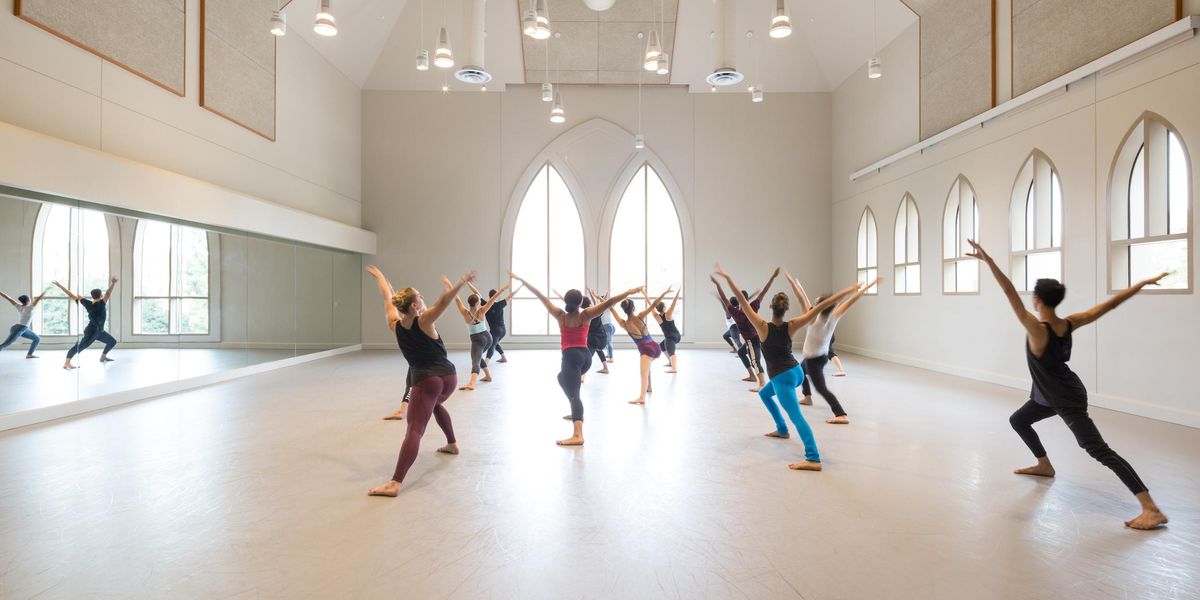Hamilton: A Broadway Revolution
Hamilton may pave the way for hip hop in musicals
A rap breaks out. Photo by Joan Marcus, Courtesy Hamilton.
Given the Revolutionary War battles, pistol duels, political rivalries, sex scandals and explosive cabinet meetings taking place during Alexander Hamilton’s short, busy whoosh through American history, his life hardly seems to have the makings of a typical Broadway musical. But if you’ve been paying attention, you know that Lin-Manuel Miranda is telling the story through rap and other genres and Andy Blankenbuehler is choreographing the battles, duels and romantic entanglements through hip hop and other moves. This unlikely show is Hamilton, the runaway off-Broadway hit of last season now likely to repeat history on Broadway—and maybe make it.
Phillipa Soo plays Hamilton’s wife, Eliza Schuyler Hamilton. Photo by Joan Marcus, Courtesy Hamilton.
Broadway has not been particularly welcoming to hip hop, although Miranda and Blankenbuehler, along with Hamilton’s director, Thomas Kail, cracked the door open in 2008 with their Tony-winning In the Heights. But there hasn’t been a rush to follow them through that door. Despite its gold-plated Tupac Shakur score and vibrant performances, Holler If Ya Hear Me garnered tepid reviews and ran only a month last season. Bring It On, with music cowritten by Miranda and direction and choreography by Blankenbuehler, lasted for all of five in 2012. But given its critical kudos and sold-out performances at The Public Theater in the spring, Hamilton could be the show that establishes hip hop once and for all as a viable vocabulary for musical theater, in the way that Hair allowed Broadway to accept rock.
Miranda’s Hamilton score is not confined to hip hop—he’s included elements of R&B, jazz and standard Broadway show tunes. But Miranda, who also stars in the title role, tells much of Hamilton’s story in rap, for two reasons. “One, the incredible unlikeliness of his arc, from penniless orphan in the Caribbean to architect of our financial system at the birth of our country,” says Miranda. “That’s a hip-hop story to me. This is a guy who consistently, against insane odds, wrote his way out of his circumstances. Hip hop was created out of the ashes of something else, and Alexander Hamilton created an incredible life out of the ashes of a very traumatic early one.”
Daveed Diggs plays Thomas Jefferson. Photo by Joan Marcus, Courtesy Hamiton.
The other reason rap seemed a natural fit, Miranda says, is that “Alexander Hamilton produced over 27 volumes of written work. He’s always bursting at the seams with language.” Hip hop, he notes, offers “more words per capita” than other song forms. “Our country was created from indelible words, from ‘life, liberty and the pursuit of happiness’ all the way through Thomas Paine and all the way through our Constitution.”
Like Miranda, Blankenbuehler admires Hamilton’s restless need to “constantly reinvent himself,” allowing the choreographer the flexibility to draw on a variety of dance forms. “There’s a little bit of everything,” he says. “There’s a Fosse-esque number. There’s a social-dance sequence where we do a contemporary take on formal social dances of the period.” There’s even a smattering of jitterbug and tap.
In conversation, Blankenbuehler and Miranda regularly applaud each other. The choreographer loves the nonstop music; the composer loves the nonstop movement. And they both love the idea that this show about America’s rebellious youth is being told in the language of America’s rebellious youth. But when Miranda praises a particular choreographic moment, Blankenbuehler credits Jerome Robbins for having invented it. “We really idolize the people who made great work before us,” he says. “It’s so important for us to always look back and forward at the same time.” And Miranda echoes the idea in his own terms. “To me a verse by Rakim is every bit as compelling as a verse by Sondheim,” he says. Together, Miranda and Blankenbuehler could turn out to be the Founding Fathers of a new kind of musical.
Is There Room for Hip Hop on Broadway?
Photo by Joan Marcus, Courtesy Hamilton
Lin-Manuel Miranda:
“Once upon a time, musical theater reflected the music of its day. You would hear a Cole Porter song on the radio, and then you would hear that song in Kiss Me, Kate. The split happened, I think, with the birth of rock ‘n’ roll. I don’t regret that, because I think it expanded the terrain of stories musical theater could tell. With the advent of Kander and Ebb and Sondheim and Harnick, suddenly there were musicals about presidential assassins and murderous barbers. They rewrote the rules—a musical doesn’t have to have an “A” love story and a “B” love story. It can be about whatever we make it.”
Andy Blankenbuehler:
“When I first went to hip-hop school in L.A., I went around to a lot of people who excelled in it. I said to myself, ‘These people are so cool.’ And then I looked at a step and said, ‘That’s not a hip-hop step, that’s a ballet step.’ The choreography was like a passé fourth position. I realized in that moment that yes, there are hip-hop steps, and there are hip-hop grooves. But really, hip hop is flair, it’s personality, it’s color. It’s about bringing a style to your gym shoes. It’s about bringing a sense of cool to a passé. It’s a hip-hop mentality.”
Miranda as Alexander Hamilton. Photo by Joan Marcus, Courtesy Hamilton.




